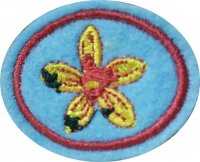Difference between revisions of "AY Honors/Fabric Yo-Yo/Answer Key/pt-br"
(Created page with "</noinclude> <!-- 3. Explique as etapas da técnica do fuxico. -->") |
(Created page with "</noinclude> <!-- 2. Qual o principal objetivo da arte do fuxico? -->") |
||
| Line 37: | Line 37: | ||
<!-- 5. Demonstrar e exemplificar as seguintes bases do fuxico? --> | <!-- 5. Demonstrar e exemplificar as seguintes bases do fuxico? --> | ||
| − | + | <noinclude></noinclude> | |
| − | <noinclude | ||
| − | |||
{{ansreq|page={{#titleparts:{{PAGENAME}}|2|1}}|num=5a}} <!--T:9--> | {{ansreq|page={{#titleparts:{{PAGENAME}}|2|1}}|num=5a}} <!--T:9--> | ||
<noinclude><div lang="en" dir="ltr" class="mw-content-ltr"> | <noinclude><div lang="en" dir="ltr" class="mw-content-ltr"> | ||
Revision as of 21:34, 28 May 2021
1
Fabric yo-yo consists of taking advantage of and recycling the scraps of colorful fabrics used by stylists and seamstresses to create beautiful pieces. The word "fuxico" in Portuguese means "gossip" and this technique comes from when women were supposed to meet and go into "conversations and gossip", and would make these small pieces in the meantime. From cutting, folding and uniting, suddenly these beautiful flowers appeared that could adorn a lapel, a wallet, cushions, hair clips, and many other applications. Most of these works of art consist of small circles of fabrics that are stitched, sewn, and glued together to decorate a surface. Buttons, ribbons, beads, bows and pearls are added as final details.
In English it is known as "fabric yo-yo" and in the 1930s they were very popular and are still used today. They make great accessories for hair, dolls, small animals, etc. which are formed by many rounds of cloth or fabric.
2
3
4
5
5a
5b
5c
6
6a
6b
6c
6d
6e
6f
6g



